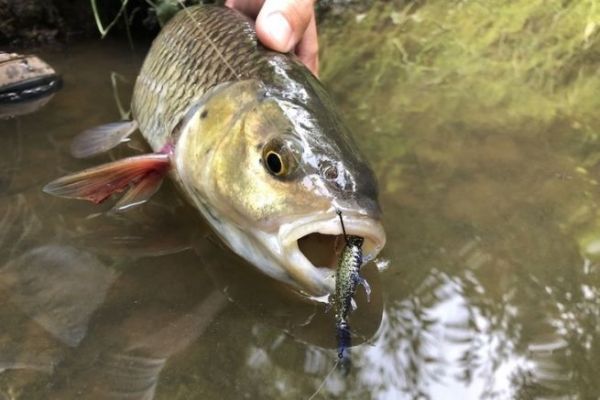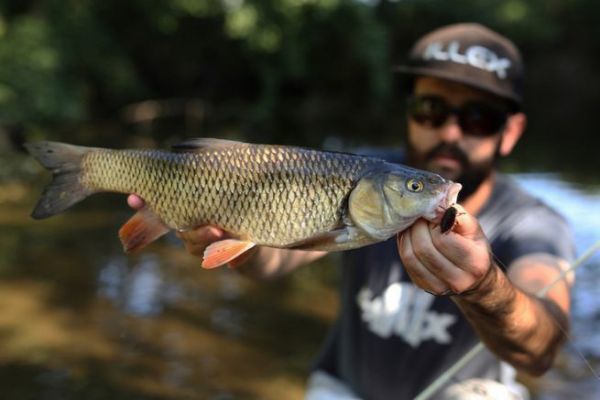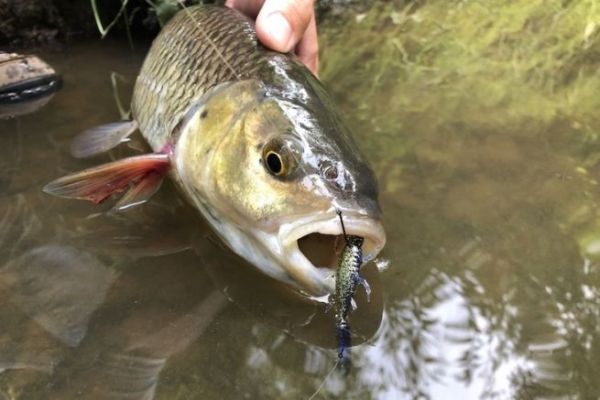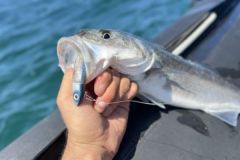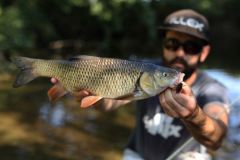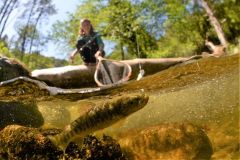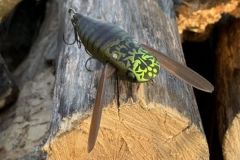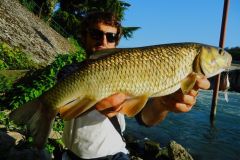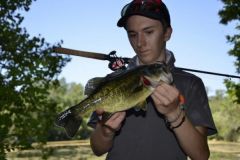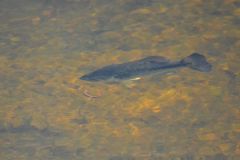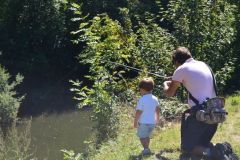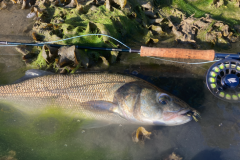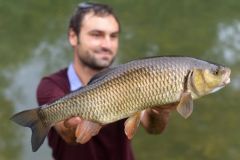These lures all meet strict specifications and have in common the search for mimicry and the presence of many vibratory appendages. Also, their density is in general important taking into account their small size and that to allow easy and precise casts. Their weight is usually between 1 and 5 g for a size of more or less 5 cm.
Considering all the soft and hard lures, the offer is nowadays consequent and a certain number of lures are already a reference. Let's mention among them the OSP Orikanemushi, the Woodlouse Illex, the Reins Insecter, the Tiemco Panic Cicada or more recently the Sakura Notobug, among others.
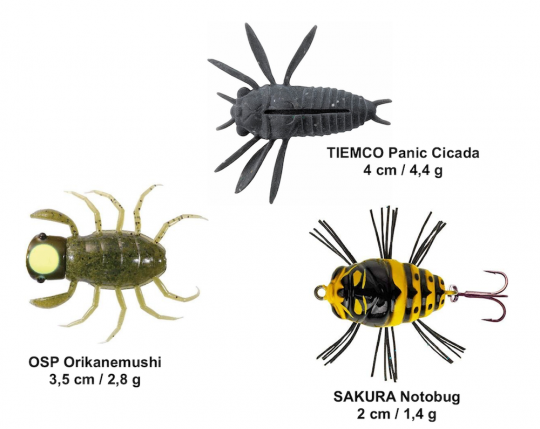
3 different profiles for 3 different bites
The Illex Woodlouse, the Reins Insecter and the Illex Magic May Fly are the three insect imitations I use the most. They are 3 complementary silhouettes which will be as many alternatives to propose to the chub in fishing condition.
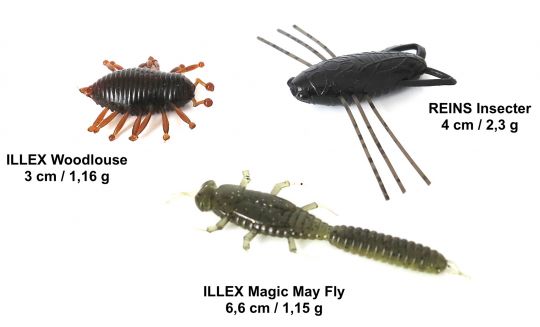
The different assemblies
The first way to rig these different insect imitations is to prick them at the nose with a single hook. For the Woodlouse and the Magic May Fly I use an Illex Finesse Down Shot in size 3 and size 2 for the larger Insecter.
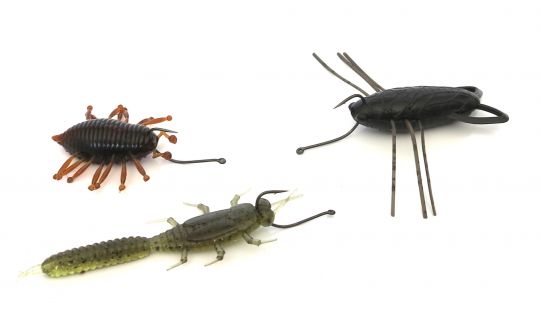
The second way is to hook the Woodlouse and Magic May Fly on the back. This type of rig is best suited for very short casts and overhand fishing. It avoids the contact of the leader with the surface.
The Insecter can be rigged in the same way, but what you can do with this lure is to attach a small treble (or single hook) to the tail. It is enough to cross the body in its length using a needle with boilies the finest possible. An effective setup when the fish are groping.
This is not possible with the Woodlouse because its body is equipped with a small air bubble that ensures, in addition to the small air chambers of its appendages, the floating of the lure. Nevertheless, if the goal is for the lure to sink slowly in the water column you can do so. This can be a solution when insects, trapped on the surface of the water, sink after a summer storm.
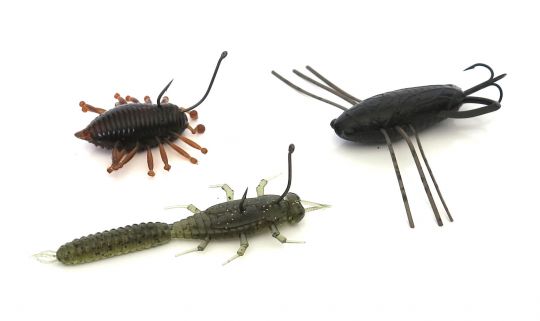
Animation
The animation of its various lures is intended to imitate a small prey in distress on the surface. This one is relatively simple and answers the following scheme: Keep your rod high, thus limiting the contact of the leader with the surface, and animate your lures on the spot, or in natural drift, by small jerks of the tip in order to generate subtle movements of the vibratory appendages.
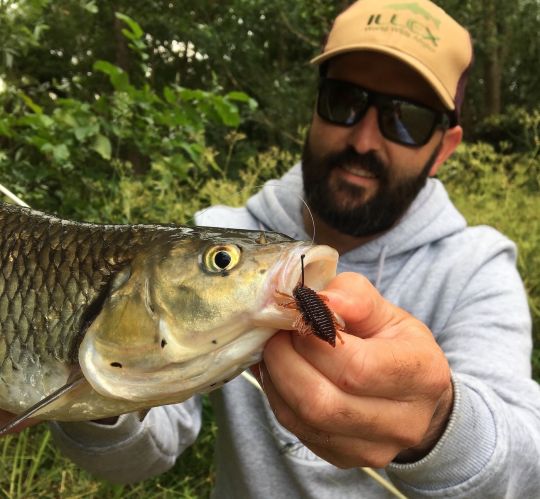
The colors
As far as colors are concerned, I prefer colors that are closer to the real preys that are part of the chub's diet, so natural and dark most of the time: "Match the Hatch" as fly fishermen are used to say!

 /
/ 